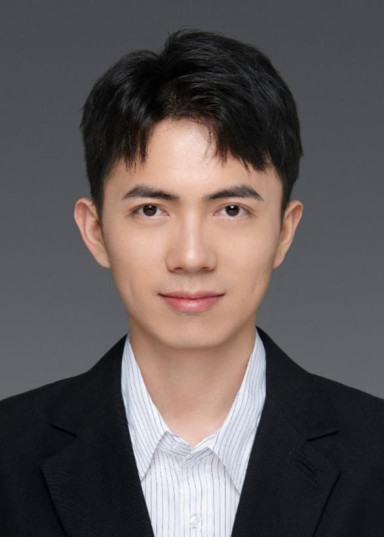
卢克龙,副研究员,硕士生导师。中国心理学会学习心理专业委员会委员、浙江省社会心理学会理事、浙江省神经科学学会教育神经科学专委会委员。2024年入选温州市瓯江青年社科学者,中文无码 优青培养工程。2017-2020就读于华东师范大学心理与认知科学中文无码 ,获博士学位。2020-2023于华东师范大学进行博士后进修。主要采用行为实验范式和基于近红外光谱成像(fNIRS)等技术的单/群体神经成像范式,探究群体创新或个体创新思维的认知神经基础,为指导和培训个体或群体创新思维提供多层次的科学证据。主持并参与多项国家级及省部级课题。主持国家级课题1项,省部级课题2项,参与国家级课题4项。相关成果已发表在Psychological Review, Trends in Cognitive Sciences, NeuroImage, Journal of Neuroscience, Cerebral Cortex等国内外权威期刊,共计40余篇,被引1000余次,h指数达16。担任Journal of Integrative Neuroscience 和Heart and Mind等刊物青年编委,Nature Human Behaviour, PNAS和《心理学报》《心理科学》等刊物的审稿专家。欢迎报考,联系邮箱:[email protected]
1. 专业研究方向
(1)团体/个体创新思维的认知神经机制。
(2)创新参与影响知情意的内在机制。
2.所获成果
(1)科研项目
① 国家自然科学基金:团体创新中的观念生成路径及其神经基础研究(2024.01-2026.12,主持,32300900,30)
② 中文无码 优青培养项目(2024.04-2028.04,主持,30)
③ 温州市哲学社会科学规划课题:创新活动中独立思考与团体协作模式交替进行的必要性研究(2023.07-2024.07,主持,23WSK023YB,0.6)
④ 上海市超级博士后激励计划项目:团体创新活动的超脑网络特征(2020.11-2022.12,主持,2020150,30)
⑤ 中国博士后科学基金第68批面上资助二等项目:团体创新活动的多脑神经网络基础(2020.11-2022.12,主持,2020M681215,5)
⑥ 华东师范大学未来科学家培育项目:团体创造活动中的脑-脑间神经互动机制(2019.05-2021.05,主持,WLKXJ2019-003,15)
(2)专著
①《创造力神经科学》,“十四五”国家重点出版物出版规划项目的脑科学前沿译丛,浙江教育出版社(2022年,郝宁,卢克龙,王欣悦)
(3)科研成果奖
① 温州市第十九届哲学社会科学优秀成果奖学术进步奖(卢克龙,潘亚峰)
② 第四届天元拔尖创新人才(超常儿童)教育奖金奖提名奖(郝宁,卢克龙,王欣悦)
③ 《心理学报》2021-2022年度高影响力论文奖(程瑞,卢克龙,郝宁)
④ 苏州市第十五次哲学社会科学优秀成果奖二等奖(袁欢,卢克龙,郝宁)
3. 发表论文(第一或通讯作者,#共一)
1. Lu, K., Wang, X., Qiao, X., Gao, Z., & Hao, N. (2025). Group creativity emerges from triple ideation pathways: Neurobehavioral evidence from a functional nearinfrared spectroscopy hyperscanning study. Cerebral Cortex, 35: bhaf129
2. Lu, K., Qiao, X., Wang, X., Gao, Z., & Hao, N. (2025). Unlocking group creativity: Leveraging flexibility, persistence, and convergence ideation pathways. Thinking Skills and Creativity, 57:101843.(中科院二区)
3. Lu, K., & Hao, N. (2024). The interpersonal neural coupling in group creative ideation. Psychological Review. Advance online publication. //doi.org/10.1037/rev0000524 (中科院一区Top)
4. Lu, K., & Pan, Y. (2023). A collective neuroscience lens on intergroup conflict. Trends in Cognitive Sciences, 27,985-986.(中科院一区Top)
5. Lu, K., & Pan, Y. (2023). Toward an interpersonal neuroscience in technologically assisted (Virtual) interactions. The Journal of Neuroscience, 43, 3787-3788.(中科院二区Top)
6. Lu, K., Gao, Z., Wang, X., Qiao, X., He, Y., Zhang, Y., & Hao, N. (2023). The hyper-brain neural couplings distinguishing high-creative group dynamics: An fNIRS hyperscanning study. Cerebral Cortex, 33, 1630–1642.
7. Lu, K., Qiao, X., Qiang, Y., & Hao, N. (2021). Educational diversity and group creativity: Evidence from fNIRS hyperscanning. NeuroImage, 243:118564.(中科院一区)
8. Lu, K., Teng, J., & Hao, N. (2020). Gender of partner affects the interaction pattern during group creative idea generation. Experimental Brain Research, 238, 1157-1168.
9. Lu, K., Yu, T., & Hao, N. (2020). Creating while taking turns, the choice to unlocking group creative potential. NeuroImage, 219: 117025.(中科院一区)
10. Lu, K., & Hao, N. (2019). When do we fall in neural synchrony with others? Social Cognitive and Affective Neuroscience, 14, 253-261.(中科院二区)
11. Lu, K., Qiao, X., & Hao, N. (2019). Praising or keeping silent on partner's ideas: Leading brainstorming in particular ways. Neuropsychologia, 124, 19-30.
12. Lu, K., Xue, H., Nozawa, T., & Hao, N. (2019). Cooperation makes a group be more creative. Cerebral Cortex, 29, 3457-3470.
13. 卢克龙, 郝宁. (2024). 基于近红外的超扫描技术在团体创造力研究中的应用. 见胡卫平(编). 创造力研究进展(2022-2023): 基于中国研究者的视角(pp.18-38). 陕西:陕西师范大学出版总社.
14. 卢克龙, 郝宁. (2019). 团体创造力研究进展.见胡卫平(编).中国创造力研究进展报告 (2017-2018) (pp.100-118). 陕西:陕西师范大学出版总社.
15. Wang, X.#, Lu, K.#, He, Y., Qiao, X., Gao, Z., Zhang, Y., & Hao, N. (2024). Dynamic brain networks in spontaneous gestural communication. npj Science of Learning, 9, 59.(中科院二区)
16. Liu, Z. #, Lu, K. #, Hao, N., & Wang, Y. (2023). Cognitive reappraisal and expressive suppression evoke distinct neural connections during interpersonal emotion regulation. The Journal of Neuroscience, 43, 8456-8471.(中科院二区Top)
17. Qiao, X.#, Lu, K.#, Yun, Q., & Hao, N. (2023). Similarities and distinctions between cortical neural substrates that underlie generation of malevolent creative ideas. eNeuro, 10: 0127-23.
18. Wang, X.#, Lu, K.#, He, Y., Gao, Z., & Hao, N. (2022). Close spatial distance and direct gaze bring better communication outcomes and intertwined neural networks. NeuroImage, 261: 119515.(中科院一区)
19. Xue, H.#, Lu, K. #, & Hao, N. (2018). Cooperation makes two less-creative individuals turn into a highly-creative pair. NeuroImage, 172, 527-537. (中科院一区)
20. Qiao, X.#, Lu, K.#, Teng, J., Gao, Z., & Hao, N. (2022). Middle occipital area differentially associates with malevolent versus benevolent creativity: An fNIRS investigation. Social Neuroscience, 17, 127-142.
21. Yuan, H.#, Lu, K.#, Jing, M., Yang, C., & Hao, N. (2022). Examples in creative exhaustion: The role of example features and individual differences in creativity. Personality and Individual Differences, 189:111473.
22. Yuan, H.#, Lu, K.#, & Hao, N. (2021). Examples facilitate divergent thinking: The effect of timing and quality. Consciousness and Cognition, 93:103169.
